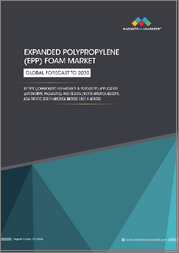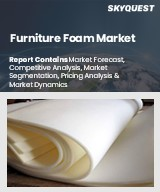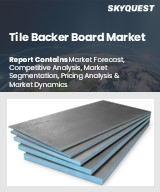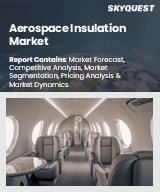
|
시장보고서
상품코드
1838972
자동차용 폼 시장 : 폼 유형, 차종, 용도, 최종사용자, 유통 채널별 - 세계 예측(2025-2032년)Automotive Foam Market by Foam Type, Vehicle Type, Application, End-User, Distribution Channel - Global Forecast 2025-2032 |
||||||
자동차용 폼 시장은 2032년까지 연평균 복합 성장률(CAGR) 6.02%로 806억 6,000만 달러에 이를 것으로 예측됩니다.
| 주요 시장 통계 | |
|---|---|
| 기준 연도 : 2024년 | 505억 달러 |
| 추정 연도 : 2025년 | 535억 8,000만 달러 |
| 예측 연도 : 2032년 | 806억 6,000만 달러 |
| CAGR(%) | 6.02% |
진화하는 재료의 역할, 성능의 트레이드오프, 설계, 조달, 컴플라이언스에 대한 전략적 의미를 밝히는 자동차 폼의 기술적 방향성
자동차 폼의 상황은 차량 아키텍처의 변화, 편안함과 음향에 대한 소비자의 기대, 재료와 재활용 가능성에 대한 규제 강화로 인해 기술 개선과 용도 전환이 빠르게 진행되고 있습니다. 이 소개에서는 폼이 현대 차량 시스템에 어떻게 통합되는지 정의하고, 주요 재료 클래스, 제조 경로 및 응용 인터페이스의 프레임워크를 제시합니다. 먼저, 무게 관리, 음향 성능, 단열성, 부품의 내구성 등 쿠션재 이외의 폼의 역할을 명확히 하고, OEM 및 티어 공급업체에게 재료 선택을 전략적 지렛대로 삼을 수 있도록 합니다.
전통적인 용도에서 벗어나 제조업체는 다층 성능 요구 사항을 충족시키기 위해 폼 배합을 재평가했습니다. 서론에서는 폐쇄 셀 구조와 개방 셀 구조의 주요 기술적 절충점을 보여주고, 부품 소형화에서 밀도와 탄성이 부품의 소형화에 미치는 영향을 강조하고, 복합 기판과의 통합이 조립 공정에 미치는 영향을 강조합니다. 이러한 기술적 기준선을 확립함으로써 독자들은 자동차 수명주기 전반에 걸쳐 조달, 엔지니어링, 제품 기획 의사결정에 도움이 되는 재료과학의 기초를 명확하게 이해할 수 있습니다.
전동화, 경량화, 지속가능성, 디지털 제조가 제품 요구 사항, 공급망, 경쟁 우위를 재정의하는 방법
자동차 폼 분야는 제품 로드맵과 가치사슬을 변화시키는 변혁적 힘에 의해 재구성되고 있습니다. 배터리 팩과 전기 구동계가 진동 스펙트럼과 열 관리의 우선순위를 변화시키면서 전동화는 새로운 열 및 음향 요구 사항을 요구하고 있습니다. 이와 함께 경량화 움직임은 충돌 안전성과 편안함을 해치지 않고 부품의 박형화를 가능하게 하기 위해 발포 밀도, 셀 구조, 접착 계면에 대한 면밀한 검토를 강화하고 있습니다.
지속가능성은 법규 준수 체크박스에서 경쟁 차별화 요소로 변화하고 있으며, 바이오 화학물질, 재활용 원료, 폐쇄 루프 회수 프로그램에 대한 투자를 촉진하고 있습니다. 디지털 제조 및 시뮬레이션 도구는 설계 반복을 가속화하고, 엔지니어는 다축 하중과 다양한 열 환경에서의 폼 거동을 예측할 수 있게 되었습니다. 업스트림 원자재 집중과 지정학적 마찰로 인해 이중 조달 전략과 지역 제조의 다변화가 촉진되어 공급망의 탄력성이 중요한 과제로 대두되고 있습니다. 이러한 변화는 총체적으로 공급업체와 OEM이 성능, 총 시스템 비용, 환경 영향과 같은 통합적인 지표를 중심으로 연구개발, 조달, 제품 개발을 조정하도록 요구하고 있습니다.
관세 중심의 조달 전략, 생산 기지, 상거래 관행의 재편으로 인해 공급망 민첩성과 지역 생산 능력에 대한 투자를 강요받게 됩니다.
2025년, 미국이 시행한 관세 정책은 자동차 발포 부품 제조업체와 구매자에게 업무적, 전략적 복잡성을 더욱 증가시킬 것입니다. 이러한 조치는 공급업체 선택, 인코텀 선택 및 국경 간 제조의 경제성에 영향을 미치고, 상륙 비용을 변경하고, 중요한 화학 물질 및 완제품의 육상 생산 또는 근해 생산을 장려했습니다. 세계 사업을 전개하는 기업들에게 관세의 영향은 조달 매트릭스를 재평가하고, 설계 표준화 및 재료 조화를 통해 그 영향을 최소화하기 위해 조달과 제품 엔지니어링의 긴밀한 협업을 촉구하고 있습니다.
관세는 직접적인 조달에 미치는 영향뿐만 아니라, 공급망 지역화에 대한 논의를 가속화하여 주요 자동차 조립 거점에 가까운 생산 능력에 대한 투자를 촉진하고 있습니다. 기업들은 엘라스토머, 폴리에틸렌, 폴리우레탄 프리카서 공급의 연속성을 확보하기 위해 공급처를 다변화하고 전략적 파트너십을 모색하는 방식으로 대응하고 있습니다. 정책 환경은 또한 약간의 설계 및 포장 변경으로 관세 분류가 크게 달라질 수 있는 화물 최적화 및 관세 엔지니어링의 중요성을 높이고 있습니다. 앞으로도 관세 변동이 계속될 것으로 예상되기 때문에 공급망 민첩성과 규제에 정통한 커머셜 팀이 경쟁 차별화의 최전선에 서게 될 것입니다.
전략적 우선순위를 결정하기 위해 폼 케미스트리, 자동차 플랫폼, 용도 수요, 최종 사용자 채널, 유통 역학 등을 연결하는 계층별 세분화 프레임워크
세분화 분석을 통해 폼의 전체 밸류체인에서 뚜렷한 성능과 상업적 의미가 밝혀졌습니다. 이 연구에서는 폼의 유형에 따라 밀폐성과 열 안정성을 위한 엘라스토머 폼, 고성능 음향처리와 난연성을 위한 멜라민 폼, 충격완화와 경량 쿠션을 위한 폴리에틸렌 폼, 다용도 시트와 인테리어의 편안함을 위한 폴리우레탄 폼으로 구분하고 있습니다. 구분합니다. 각 재료 클래스는 고유한 가공 요구 사항, 접착 특성, 사용 기한을 고려해야 하며, 재료 선택과 공급업체의 능력에 영향을 미칩니다.
목차
제1장 서문
제2장 조사 방법
제3장 주요 요약
제4장 시장 개요
제5장 시장 인사이트
제6장 미국 관세의 누적 영향 2025
제7장 AI의 누적 영향 2025
제8장 자동차용 폼 시장 : 폼 유형별
- 엘라스토머 폼
- 멜라민 폼
- 폴리에틸렌 폼
- 폴리우레탄 폼
제9장 자동차용 폼 시장 : 차량 유형별
- 상용차
- 승용차
제10장 자동차용 폼 시장 : 용도별
- 도어 패널
- 헤드 라이너
- 계기 패널
- 좌석
제11장 자동차용 폼 시장 : 최종사용자별
- 애프터마켓
- OEM
제12장 자동차용 폼 시장 : 유통 채널별
- 오프라인
- 온라인
제13장 자동차용 폼 시장 : 지역별
- 아메리카
- 북미
- 라틴아메리카
- 유럽, 중동 및 아프리카
- 유럽
- 중동
- 아프리카
- 아시아태평양
제14장 자동차용 폼 시장 : 그룹별
- ASEAN
- GCC
- EU
- BRICS
- G7
- NATO
제15장 자동차용 폼 시장 : 국가별
- 미국
- 캐나다
- 멕시코
- 브라질
- 영국
- 독일
- 프랑스
- 러시아
- 이탈리아
- 스페인
- 중국
- 인도
- 일본
- 호주
- 한국
제16장 경쟁 구도
- 시장 점유율 분석, 2024
- FPNV 포지셔닝 매트릭스, 2024
- 경쟁 분석
- Covestro AG
- BASF SE
- Dow Inc.
- Huntsman International LLC
- Woodbridge Foam Corporation
- JSP Corporation
- Asahi Kasei Corporation
- Recticel NV
- Carpenter Co.
- Rogers Corporation
The Automotive Foam Market is projected to grow by USD 80.66 billion at a CAGR of 6.02% by 2032.
| KEY MARKET STATISTICS | |
|---|---|
| Base Year [2024] | USD 50.50 billion |
| Estimated Year [2025] | USD 53.58 billion |
| Forecast Year [2032] | USD 80.66 billion |
| CAGR (%) | 6.02% |
A technical orientation to automotive foam that clarifies evolving material roles, performance trade-offs, and strategic implications for design, sourcing, and compliance
The automotive foam landscape is undergoing a period of rapid technical refinement and application reorientation driven by shifting vehicle architectures, consumer expectations for comfort and acoustics, and intensified regulatory focus on materials and recyclability. This introduction frames the key material classes, manufacturing pathways, and application interfaces that define how foam now integrates into modern vehicle systems. It begins by clarifying the role of foam beyond cushioning - as an enabler of weight management, acoustic performance, thermal insulation, and component durability - and positions material selection as a strategic lever for OEMs and tier suppliers.
Transitioning from traditional uses, manufacturers are re-evaluating foam formulations to meet multilayer performance requirements while responding to tighter emission and end-of-life mandates. The introduction sets out the principal technical trade-offs between closed-cell and open-cell architectures, highlights the implications of density and resilience on part miniaturization, and underscores how integration with composite substrates affects assembly processes. By establishing this technical baseline, readers gain a clear sense of the material science fundamentals that inform procurement, engineering, and product planning decisions across the vehicle lifecycle.
How electrification, lightweighting, sustainability imperatives, and digital manufacturing are converging to redefine product requirements, supply chains, and competitive advantage
The automotive foam sector is being reshaped by a constellation of transformative forces that are altering product roadmaps and value chains. Electrification is driving novel thermal and acoustic requirements as battery packs and electric drivetrains change vibration spectra and heat management priorities. In parallel, the move toward lightweighting is intensifying scrutiny of foam density, cellular structure, and adhesive interfaces to enable thinner components without compromising crashworthiness or comfort.
Sustainability has shifted from a compliance checkbox to a competitive differentiator, prompting investments in bio-based chemistries, recycled feedstocks, and closed-loop takeback programs. Digital manufacturing and simulation tools are accelerating design iterations, allowing engineers to predict foam behavior under multi-axial loads and varying thermal regimes. Supply chain resilience has ascended the agenda, with upstream raw material concentration and geopolitical friction prompting dual-sourcing strategies and regional manufacturing diversification. These shifts collectively compel suppliers and OEMs to align R&D, procurement, and product development around integrated metrics of performance, total system cost, and environmental impact.
Tariff-driven realignment of sourcing strategies, production locations, and commercial practices that compel supply chain agility and regional capacity investment
In 2025, tariff policies implemented by the United States introduced an additional layer of operational and strategic complexity for manufacturers and buyers of automotive foam components. These measures have influenced supplier selection, incoterm choices, and the economics of cross-border manufacturing by altering landed costs and incentivizing onshore or nearshore production for critical chemistries and finished parts. For companies with global footprints, tariff effects have prompted re-evaluation of sourcing matrices and encouraged closer collaboration between procurement and product engineering to minimize exposure through design standardization and material harmonization.
Beyond immediate procurement impacts, tariffs have accelerated conversations around regionalization of supply chains, spurring investments in capacity closer to key vehicle assembly hubs. Firms have responded by diversifying supplier bases and exploring strategic partnerships to secure supply continuity for elastomers, polyethylenes, and polyurethane precursors. The policy environment has also heightened the importance of freight optimization and tariff engineering, where minor design or packaging changes can materially alter duty classifications. Looking ahead, sustained tariff volatility will likely keep supply chain agility and regulatory-savvy commercial teams at the forefront of competitive differentiation.
A layered segmentation framework connecting foam chemistries, vehicle platforms, application demands, end-user channels, and distribution dynamics to guide strategic prioritization
Segmentation analysis reveals distinct performance and commercial implications across the foam value chain, and understanding these distinctions is essential for focused strategy. Based on Foam Type, the study distinguishes elastomeric foam for sealing and thermal stability, melamine foam for high-performance acoustic treatment and fire-retardant needs, polyethylene foam for impact mitigation and lightweight cushioning, and polyurethane foam for versatile seating and interior comfort. Each material class presents unique processing demands, bonding characteristics, and end-of-life considerations that influence material selection and supplier capabilities.
Based on Vehicle Type, differentiation between commercial vehicles and passenger cars shapes durability, duty-cycle expectations, and regulatory compliance requirements, with commercial fleets often prioritizing abrasion resistance and serviceability while passenger car segments emphasize occupant comfort and NVH suppression. Based on Application, distinct design and validation protocols emerge for door panels, headliners, instrument panels, and seats, where attachment methods, flammability standards, and surface aesthetics diverge appreciably. Based on End-User, the aftermarket versus original equipment manufacturer dynamic dictates traceability expectations and warranty obligations, impacting compound specifications and inventory strategies. Based on Distribution Channel, offline and online pathways affect lead times, lot sizes, and service models, with digital channels enabling smaller, elastic orders and enhanced aftermarket penetration. Taken together, these segmentation lenses provide a granular framework for prioritizing technical investments and commercial initiatives.
How differing regional drivers shape material innovation, regulatory compliance, manufacturing footprints, and go-to-market approaches across principal global markets
Regional dynamics materially influence material availability, regulatory expectations, and customer preferences across the global automotive foam landscape. In the Americas, established manufacturing clusters and deep aftermarket networks favor rapid product iteration and strong logistics infrastructure, while policy shifts and reshoring incentives are driving targeted investments in local chemical processing and component fabrication. The emphasis in this region often centers on balancing performance with regulatory compliance for flammability and emissions, and OEMs typically prioritize components that facilitate rapid service intervals and robust warranty performance.
In Europe, Middle East & Africa, regulatory rigor around sustainability, recyclability, and end-of-life reporting shapes material innovation, with manufacturers increasingly adopting bio-based feedstocks and recycling pathways to meet stringent standards. Design aesthetics and acoustic expectations in this region also drive premium interior specifications. In Asia-Pacific, manufacturing scale, proximity to feedstock suppliers, and rapid EV adoption are creating opportunities for component standardization and high-volume production techniques. Supply chain strategies here frequently prioritize responsiveness to fast-evolving vehicle programs and regional localization of critical raw materials. These regional contrasts inform where to locate capacity, how to configure logistics, and which performance attributes to emphasize for market entry and expansion.
Competitive dynamics where formulation mastery, integrated supply capabilities, and sustainability innovation determine supplier differentiation and customer preference
Competitive dynamics in the automotive foam sector reflect a mix of legacy polymer specialists, systems integrators, and emerging materials innovators. Leading suppliers differentiate through deep formulation expertise, validated manufacturing quality systems, and the ability to integrate foam components into complex subassemblies. Strategic partnerships between polymer producers and tier suppliers are increasingly common, enabling co-development of tailored compounds and faster scale-up from laboratory to production. Investment in testing infrastructure and certification pathways provides a meaningful barrier to entry, particularly for applications with rigorous safety and flammability requirements.
At the same time, startups and specialized material firms are pushing alternative chemistries, recycled content solutions, and process innovations such as water-borne systems and lower-temperature cures. These entrants pressure incumbents to accelerate sustainable product roadmaps and provide compelling value propositions around total lifecycle performance. From a commercial perspective, firms that can combine material innovation with proven supply reliability and localized technical service tend to command stronger purchase preference among OEM engineering teams. Collaboration models that bundle materials, component design, and assembly support increase stickiness and reduce buyer switching costs.
Actionable cross-functional roadmap recommendations that connect materials R&D, regional capacity planning, supplier collaboration, and commercial models to capture strategic value
Leaders should pursue an integrated agenda that aligns material innovation, manufacturing footprint, and commercial engagement to capture emergent opportunities. Begin by establishing a cross-functional roadmap that links R&D targets for recyclability, density reduction, and multi-performance grading to procurement criteria and validation timelines. Prioritize investments in dual-sourcing and regional capacity near key OEM clusters to mitigate tariff exposure and logistics disruption while maintaining flexibility to scale for new vehicle programs.
Drive closer collaboration with OEM engineering teams through co-development pilots focused on adhesives, bonding interfaces, and simulation-led design to reduce prototyping cycles. Enhance sustainability credentials by validating recycled and bio-based feedstocks under real-world durability protocols and documenting end-of-life pathways. Commercially, retool distribution strategies to exploit digital channels for aftermarket growth while maintaining high-touch service for OEM contracts. Finally, invest in certification and testing infrastructure to shorten approval timelines and position the organization as a reliable partner for advanced applications such as EV battery thermal management and next-generation acoustic packages.
A blended methodology combining primary practitioner interviews, standards-based testing insights, supplier disclosures, and engineering-first principles to ensure practical relevance
The research approach combined primary engagement with engineers, procurement leaders, and material scientists across OEMs, tier suppliers, and aftermarket distributors, supplemented by a rigorous review of standards, patent filings, and publicly disclosed technical papers. Primary interviews focused on validation protocols, procurement constraints, and emergent performance priorities, while technical assessments evaluated material behavior under acoustic, thermal, and mechanical loading conditions. The methodology prioritized triangulation between practitioner insight, standards-based testing, and manufacturing feasibility to ensure relevance for product development and sourcing decisions.
Quantitative inputs were gathered through structured supplier questionnaires addressing processing limits, recyclability claims, and lead-time commitments, and these were cross-checked against technical certifications and third-party laboratory reports. Where proprietary performance data was not available, scenario-based modeling and engineering first principles were used to illustrate relative trade-offs. This blended approach yields a practical, engineering-grounded perspective that supports actionable recommendations while remaining transparent about data sources and assumptions.
Synthesis of strategic imperatives and material priorities that determine which organizations will convert foam innovation into sustainable competitive advantage
In conclusion, the automotive foam sector is at an inflection point where material science advances, regulatory pressures, and shifting vehicle architectures are converging to reshape product requirements and commercial strategies. Success will favor organizations that integrate sustainability with performance, invest in regional supply resilience, and engage OEMs through co-development and fast validation cycles. Foam is no longer a commodity input; it is a system-level enabler of comfort, safety, and acoustic differentiation that requires cross-disciplinary coordination from R&D through aftermarket support.
Moving forward, stakeholders who prioritize lifecycle thinking, adapt to tariff and policy dynamics, and harness digital design and testing tools will be better positioned to convert technical capabilities into durable customer relationships. The path to competitive advantage lies in translating materials expertise into assembly-level solutions that deliver measurable improvements in vehicle performance, manufacturability, and total cost of ownership.
Table of Contents
1. Preface
- 1.1. Objectives of the Study
- 1.2. Market Segmentation & Coverage
- 1.3. Years Considered for the Study
- 1.4. Currency & Pricing
- 1.5. Language
- 1.6. Stakeholders
2. Research Methodology
3. Executive Summary
4. Market Overview
5. Market Insights
- 5.1. Adoption of bio-based and recycled foam materials for sustainable automotive components
- 5.2. Development of lightweight polyurethane foam blends for electric vehicle range improvements
- 5.3. Integration of advanced acoustic damping foam solutions for cabin noise reduction and comfort
- 5.4. Implementation of high-temperature resistant silicone foams for EV battery thermal management
- 5.5. Automation and 3D printing technologies for precision automotive foam manufacturing
- 5.6. Innovations in smart foam materials with embedded sensors for real-time impact detection
- 5.7. Circular economy initiatives driving closed-loop recycling of automotive foam scraps
6. Cumulative Impact of United States Tariffs 2025
7. Cumulative Impact of Artificial Intelligence 2025
8. Automotive Foam Market, by Foam Type
- 8.1. Elastomeric Foam
- 8.2. Melamine Foam
- 8.3. Polyethylene Foam
- 8.4. Polyurethane Foam
9. Automotive Foam Market, by Vehicle Type
- 9.1. Commercial Vehicles
- 9.2. Passenger Cars
10. Automotive Foam Market, by Application
- 10.1. Door Panels
- 10.2. Headliners
- 10.3. Instrument Panels
- 10.4. Seats
11. Automotive Foam Market, by End-User
- 11.1. Aftermarket
- 11.2. Original Equipment Manufacturer
12. Automotive Foam Market, by Distribution Channel
- 12.1. Offline
- 12.2. Online
13. Automotive Foam Market, by Region
- 13.1. Americas
- 13.1.1. North America
- 13.1.2. Latin America
- 13.2. Europe, Middle East & Africa
- 13.2.1. Europe
- 13.2.2. Middle East
- 13.2.3. Africa
- 13.3. Asia-Pacific
14. Automotive Foam Market, by Group
- 14.1. ASEAN
- 14.2. GCC
- 14.3. European Union
- 14.4. BRICS
- 14.5. G7
- 14.6. NATO
15. Automotive Foam Market, by Country
- 15.1. United States
- 15.2. Canada
- 15.3. Mexico
- 15.4. Brazil
- 15.5. United Kingdom
- 15.6. Germany
- 15.7. France
- 15.8. Russia
- 15.9. Italy
- 15.10. Spain
- 15.11. China
- 15.12. India
- 15.13. Japan
- 15.14. Australia
- 15.15. South Korea
16. Competitive Landscape
- 16.1. Market Share Analysis, 2024
- 16.2. FPNV Positioning Matrix, 2024
- 16.3. Competitive Analysis
- 16.3.1. Covestro AG
- 16.3.2. BASF SE
- 16.3.3. Dow Inc.
- 16.3.4. Huntsman International LLC
- 16.3.5. Woodbridge Foam Corporation
- 16.3.6. JSP Corporation
- 16.3.7. Asahi Kasei Corporation
- 16.3.8. Recticel NV
- 16.3.9. Carpenter Co.
- 16.3.10. Rogers Corporation



















